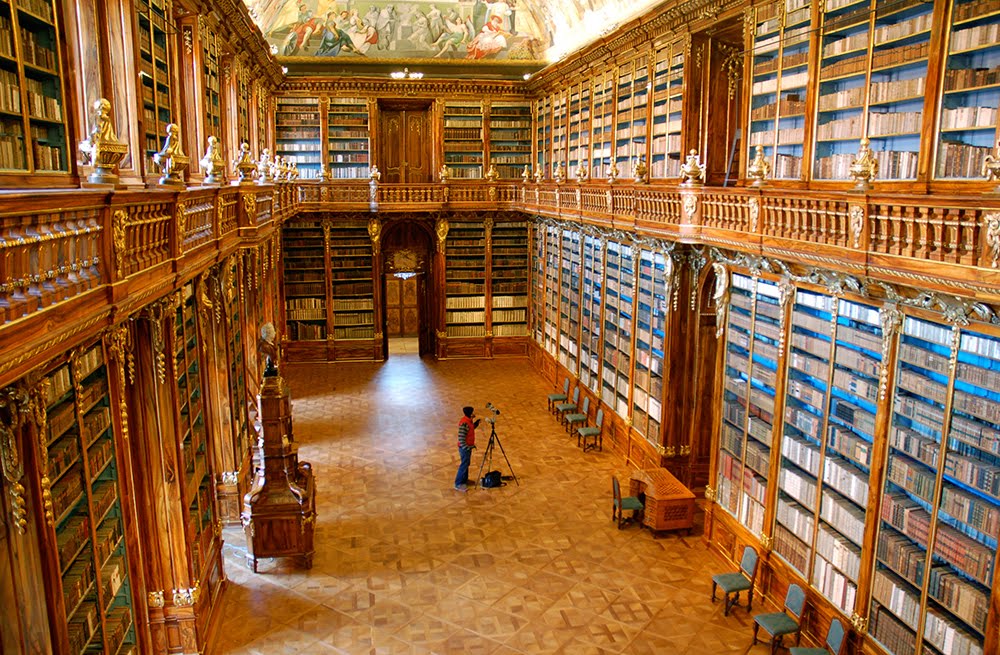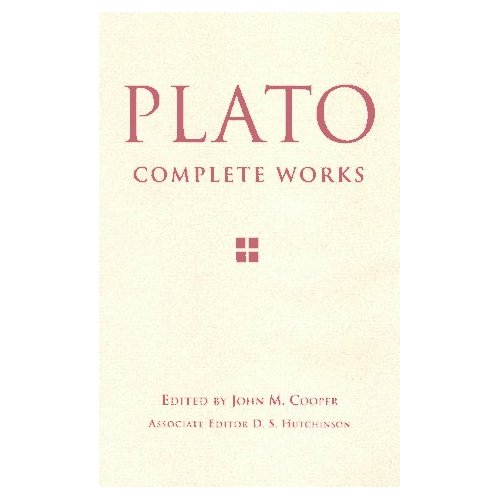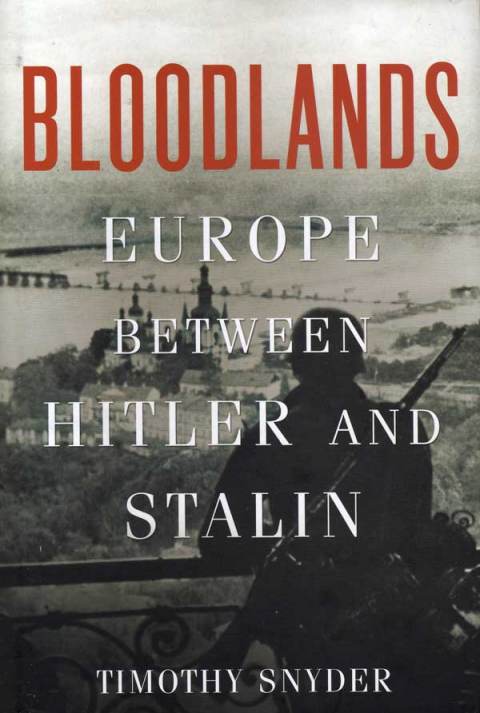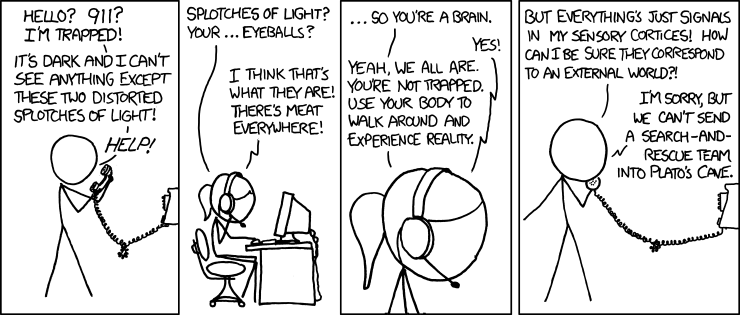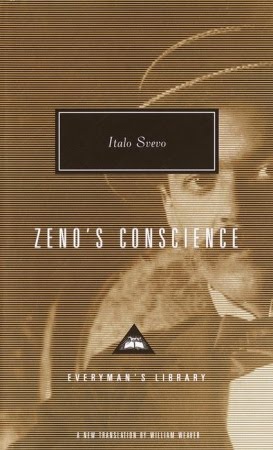From Wired.com: The finished Strahov library panorama, released Tuesday on Martin’s website, is a zoomable, high-resolution peek inside one of Prague’s most beautiful halls, a repository of rare books that is usually off-limits to tourists (a few of whom can be seen standing behind the velvet rope at the room’s normal viewing station). Martin’s panorama […]
Month: 14 years ago
“War and Sports” Tuesday, April 5, 2011 Speaker: THOMAS SCANLON 2:00 PM ET/ 11:00 AM PT (90 minute lecture and Q&A) Both sport and battle were “contests” for the Greeks, agones, in their terms. We will here look at the fascinating and puzzling legend(s) of Pheidippides (or whatever his name was), ancient long-distance messenger runners […]
I’m a little overwhelmed at what is available online to help in reading and understanding Plato’s dialogues. Many sites or posts I found focus on one or two of the dialogues so I will link them when I get to that particular work. If you know of any general resources, let me know in the […]
One of my goals has been to read Plato. And understand, at least partially, what I’m reading. If nothing else, it should prove entertaining (even if only in a painful manner) for others who took philosophy courses. I thought I would go in the order of John M. Cooper’s compilation (shown above—a gift from my […]
Timothy Snyder, Bloodlands: Europe Between Hitler and Stalin Basic Books, Hardcover, 544 pages ISBN-10: 9780465002399 / ISBN-13: 978-0465002399 Each of the dead became a number. Between them, the Nazi and Stalinist regimes murdered more than fourteen million people in the bloodlands. The killing began with a political famine that Stalin directed at Soviet Ukraine, which […]
More quotes from Bloodlands: Europe Between Hitler and Stalin by Timothy Snyder. Chapter 10 (“Ethnic Cleansings”) and Chapter 11 (“Stalinist Anti-Semitism”) look at Stalin’s actions post-World War II and how they impacted the “bloodlands.” With the relocations of ethnic populations, Stalin moved millions of people in order to create the client states he wanted. At […]
More quotes from Bloodlands: Europe Between Hitler and Stalin by Timothy Snyder. Chapter 9 (“Resistance and Incineration”) looks at Jewish resistance, the Warsaw Ghetto Uprising (April/May 1943), the destruction of that ghetto and the construction of a concentration camp on the same spot, the Warsaw Uprising (August/September 1944), and the destruction of Warsaw just before […]
More quotes from Bloodlands: Europe Between Hitler and Stalin by Timothy Snyder. Chapter 8 (“The Nazi Death Factories”) focuses on the evolution and operation of the death factories run by the German regime. While some facilities exploited those Jews healthy enough to work, others were solely intended to kill. As Snyder shrewdly put it, “Belźec […]
Source (click for larger view) A friend emailed me the link to this cartoon…thought someone out there might like it. (Be sure to move the mouse over the panels, too.)
NOTE: This entry no longer updated. See my Works Covered page for a list of all books reviewed on this blog. Since I spend a lot of time with nonfiction and initially I did not make any comments on these books I wanted to have one page that provided an easy round-up for me to […]
More quotes from Bloodlands: Europe Between Hitler and Stalin by Timothy Snyder. Chapter 6 (“Final Solution”) and Chapter 7 (“Holocaust and Revenge”) continue the look at the evolution of the “Jewish problem” and confrontations between Nazi Germany and the Soviet Union, particularly in Belarus (where half the pre-war population had been killed or moved by […]
Zeno’s Conscience by Italo Svevo (real name – Ettore Schmitz) Translation by William Weaver Sorrow and love—life, in other words—cannot be considered a sickness because they hurt. The fictional autobiography and journal of Zeno Cosini proves to be full of comic contradictions, highlighting his own unreliability. Yet Zeno can be observant and perceptive, although not […]
I had put myself in the doctor’s hands with such trust that when he told me I was cured, I believed him completely and, on the contrary, I didn’t believe in my pains, which still afflicted me. I said to them: “You’re not real, after all!” But now there can be no doubt! It’s them, […]
We were neither good nor bad, just as we were also not many other things. Goodness was the light that, in flashes and for moments, illuminated the dark human spirit. The flaming torch was necessary to give light (it had been in my spirit, and sooner or later it would also return), and in that […]
More quotes from Bloodlands: Europe Between Hitler and Stalin by Timothy Snyder. Chapter 5, titled “The Economics of Apocalypse”, looks at the plans and operations of Germany’s attack of the Soviet Union, focusing on the planned deaths of the Soviets through starvation. While the grand scale of the “Hunger Plan” was not faithfully carried out […]
More quotes from Bloodlands: Europe Between Hitler and Stalin by Timothy Snyder. Most of Chapter 4 focuses on the carving up of Poland by Hitler and Stalin. One aspect briefly touched on in this chapter that I wanted to highlight involves the deliberate elimination of Polish intellectuals by both Germany and the USSR. The removal […]
More quotes from Bloodlands: Europe Between Hitler and Stalin by Timothy Snyder. Chapter 3 looks at the expansion of the Great Terror from class persecution to national lines: People belonging to national minorities “should be forced to their knees and shot like mad dogs.” It was not an SS officer speaking but a communist party […]
See Forbes “Booked” blog for Part 1 of Oliver Stone’s dialogue with historians Paul Cartledge and James Romm on Alexander the Great. In the introduction there is a link to a collection of academians’ responses to Stone’s film on Alexander. I have compiled all of Forbes’ posts on Alexander in this post. From James Romm […]
A few more quotes from Bloodlands: Europe Between Hitler and Stalin by Timothy Snyder. Chapter 2 follows the consolidation of power by Hitler and Stalin in the 1930s and the trail of bodies in their wake. For Hitler this meant jail time to threaten potential competitors. For Stalin it meant eliminating hundreds of thousands of […]
I’m listening to Bloodlands: Europe Between Hitler and Stalin by Timothy Snyder during my commute as well as re-reading portions of it when I get home in the evening. While many of the parts are familiar to anyone with a passing interest in history, Snyder pulls the disparate and related strands together on the 14 […]
